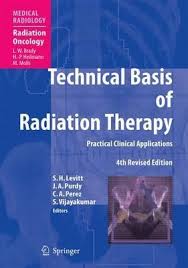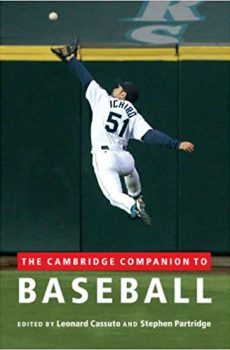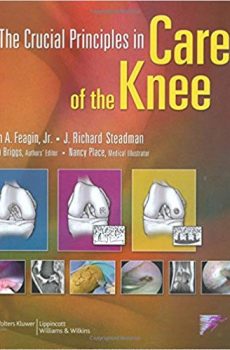
Tarzan was an Eco-Tourist
8,400.00₹ 2,250.00₹
Adventure is currently enjoying enormous interest in public culture. The image of Tarzan provides a rewarding lens through which to explore this phenomenon. In their day, Edgar Rice Burrough’s novels enjoyed great popularity because Tarzan represented the consummate colonial-era adventurer: a white man whose noble civility enabled him to communicate with and control savage peoples and animals. The contemporary Tarzan of movies and cartoons is in many ways just as popular, but carries different connotations. Tarzan is now the consummate “eco-tourist:” a cosmopolitan striving to live in harmony with nature, using appropriate technology, and helpful to the natives who cannot seem to solve their own problems. Tarzan is still an icon of adventure, because like all adventurers, his actions have universal qualities: doing something previously untried, revealing the previously undiscovered, and experiencing the unadulterated. Prominent anthropologists have come together in this volume to reflect on various aspects of this phenomenon and to discuss contemporary forms of adventure.

Teaching and Assessing Skills in Foreign Languages
1,800.00₹ 1,250.00₹
The handbooks provide clear practical and up-to-date adviceon teaching and assessing skills across a range of core subject areas for IGCSE and O Level;they can also be used by teachers delivering local syllabuses in the subject. They offer ideas and strategies for effective classroom practice, the setting of coursework, assessing students’ work and the integration of different skills. Readers can ‘dip into’ the books to read up on a particular topic or approach and the material is relevant to both new and experienced teachers alike. All authors are experienced teachers, teacher trainers and examiners.

Technical Basis of Radiation Therapy
19,990.00₹ 3,990.00₹
This book is unique in detailing in depth the technological basis of radiation therapy. Compared with the previous edition, all chapters have been rewritten and updated. In addition, new chapters have been included on various topics, including the use of imaging in treatment planning, second malignant neoplasms due to irradiation, and quality assurance in radiation oncology. The book is divided into two sections. The first covers basic concepts in treatment planning and explains the various approaches to radiation therapy. The second part documents the practical clinical applications of these concepts in the treatment of different cancers.

Test Ride on the Sunnyland Bus
1,390.00₹ 1,090.00₹
Test Ride on the Sunnyland Bus chronicles the story of an American family against the backdrop of one of the civil rights movement’s lesser-known stories. In January 1957, Joseph Spagna and five other young men waited to board a city bus called the Sunnyland in Tallahassee, Florida. Their plan was simple but dangerous: ride the bus together—three blacks and three whites—get arrested, and take their case to the U.S. Supreme Court. Fifty years later Ana Maria Spagna sets off on a journey to understand what happened and why.
Spagna travels from her remote mountain home in the Pacific Northwest to contemporary Tallahassee, searching for the truth of the incident and her father’s involvement. Her journey is complicated by the fact that her father never spoke of the Sunnyland experience and died unexpectedly when she was eleven. Seeking out the other bus riders, now in their seventies, Spagna tries to make sense of their conflicting stories. Her odyssey becomes further troubled by the sudden diagnosis of her mother’s terminal cancer.
Winner of the River Teeth Literary Nonfiction prize, Test Ride on the Sunnyland Bus deftly weaves cultural and personal history, memoir, and reportage in this fascinating look at a family and a nation’s past.

THE 10 RULES OF SUCCESSFUL NATIONS
299.00₹ 275.00₹
A wake-up call to economists who failed to foresee every recent crisis, including the cataclysm of 2008, 10 Rules is full of insights on signs of political, economic, and social change. Sharma explains, for example, why autocrats are bad for the economy; robots are a blessing, not a curse; and consumer prices don’t tell you all you need to know about inflation. He shows how currency crises begin with the flight of knowledgeable locals, not evil foreigners; how debt crises start in private companies, not government; and why the best news for any country is none at all.

The AGE of KALI – INDIAN TRAVELS and ENCOUNTERS
499.00₹ 380.00₹
The result of 10 year’s living and traveling throughout the Indian subcontinent, The Age of Kali emerges from Dalrymple’s uneasy sense that the region is slipping into the most fearsome of all epochs in ancient Hindu cosmology: “the Kali Yug, the Age of Kali, the lowest possible throw, an epoch of strife, corruption, darkness, and disintegration.” “The brilliance of this book lies in its refusal to reflect any cultural pessimism. Dalrymple’s love for the subcontinent, and his feel for its diverse cultural identity, comes across in every page, which makes its chronicles of political corruption, ethnic violence, and social disintegration all the more poignant. The scope of the book is particularly impressive, from the vivid opening chapters portraying the lawless caste violence of Bihar, to interviews with the drug barons on the North-West Frontier, and Dalrymple’s extraordinary encounter with the Tamil Tigers in Sri Lanka. Some of the most fascinating sections of the book are Dalrymple’s interviews with Imran Khan and Benazir Bhutto in Pakistan, which read like nonfiction companion pieces to Salman Rushdie’s bitterly satirical Shame. The Age of Kali is a dark, disturbing book that takes the pulse of a continent facing some tough questions.

The age of Obama
1,395.00₹ 790.00₹
The age of Obama: The changing place of minorities in British and American society by Tom Clark, Robert D. Putnam, Edward Fieldhouse
Drawing on collaborative research from a distinguished team at Harvard and Manchester universities, ‘The age of Obama’ asks how two very different societies are responding to the tide of diversity that is being felt around the rich world. ‘Guardian’ journalist Tom Clark, Robert D. Putnam – best-selling author of ‘Bowling alone’ – and Manchester’s Edward Fieldhouse offer a wonderfully readable account. Like ‘Bowling alone’, ‘The age of Obama’ mixes social scientific rigor with accessible charts and lively arguments. It will be enjoyed by politics, sociology and geography students, as well as by anyone else with an interest in ethnic relations.
Injustice, it turns out, still blight lives of many UK and US minorities – particularly African Americans. And there are signs the new diversity strains community life. Yet in both countries, public opinion is running irreversibly in favour of tolerance. That augurs well for the future – and suggests a British Obama cannot be ruled out.

The Antigone Complex
3,990.00₹ 2,600.00₹
What if psychoanalysis had chosen Antigone rather than Oedipus? This book traces the relation between ethics and desire in important philosophical texts that focus on femininity and use Antigone as their model. It shows that the notion of feminine desire is conditioned by a view of women as being prone to excesses and deficiencies in relation to ethical norms and rules. Sjöholm explains Mary Wollstonecraft’s work, as well as readings of Antigone by G.W.F. Hegel, Martin Heidegger, Luce Irigaray, Jacques Lacan, and Judith Butler.
This book introduces the concept of the “Antigone complex” in order to illuminate the obscure and multifaceted question of feminine desire, which has given rise to the fascination of generations of philosophers and other theoreticians, as well as readers and spectators. At the same time the book argues for a notion of desire that is intrinsically related to ethics. The ethical question posed by Antigone, and explored in the book, is: what determines those actions that one must do, as opposed to those that one ought to do?

THE APOLOGY
499.00₹ 450.00₹
From the author of The Vagina Monologues, one of the most influential works of the twentieth century, comes a powerful, life-changing examination of abuse and atonement.

THE BIG QUIZ BOOK: 10000 AMAZING GENERAL KNOWLEDGE QUESTIONS
550.00₹ 519.00₹
An addictive quiz ebook for all the family featuring 10,000 questions, The Big Quiz Book has something for everyone. With 10 different general knowledge categories – from Science & Technology, Art & Literature, and Natural History, to Food & Drink, Film & TV, and Sport & Leisure – and three increasing levels of difficulty, it offers a fresh and up-to-the-minute quizzing experience that will educate and entertain all the family.
Bursting with fascinating facts to boost your trivia knowledge, whatever your specialist subject or your nemesis topic, The Big Quiz Book is perfect for home entertainment and virtual pub quizzes. You won’t be able to put it down!

The Blind Man and the Loon
3,490.00₹ 2,395.00₹
The story of the Blind Man and the Loon is a living Native folktale about a blind man who is betrayed by his mother or wife but whose vision is magically restored by a kind loon. Variations of this tale are told by Native storytellers all across Alaska, arctic Canada, Greenland, the Northwest Coast, and even into the Great Basin and the Great Plains. As the story has traveled through cultures and ecosystems over many centuries, individual storytellers have added cultural and local ecological details to the tale, creating countless variations.
In The Blind Man and the Loon: The Story of a Tale, folklorist Craig Mishler goes back to 1827, tracing the story’s emergence across Greenland and North America in manuscripts, books, and in the visual arts and other media such as film, music, and dance theater. Examining and comparing the story’s variants and permutations across cultures in detail, Mishler brings the individual storyteller into his analysis of how the tale changed over time, considering how storytellers and the oral tradition function within various societies. Two maps unequivocally demonstrate the routes the story has traveled. The result is a masterful compilation and analysis of Native oral traditions that sheds light on how folktales spread and are adapted by widely diverse cultures.

The Body in Asia
8,400.00₹ 2,595.00₹
The past few decades have seen growing interest in the study of the body. However, the increasing number of exciting and influential publications has primarily, if not exclusively, focused on the body in Western cultures. The various works produced by Asian scholars remain largely unknown to Western academic debates even though Asia is home to a host of rich body cultures and religions. The peoples of Asia have experienced colonization, decolonization, and now globalization, all of which make the ‘body in Asia’ a rewarding field of research. This unique volume brings together a number of scholars who work on East, Southeast and South Asia and presents original and cutting edge research on the body in various Asian cultures.

THE BODY: A GUIDE FOR OCCUPANTS
999.00₹ 890.00₹
The Body: A Guide for Occupants is an extraordinary exploration of the human body which will have you marveling at the form you occupy. If you’ve ever wondered what really goes on inside your head, heart and beyond, Bill Bryson will help you understand the miracle of our physical and neurological make up

THE BOOK OF CHOCOLATE SAINTS
799.00₹ 519.00₹
Narrated in a huge variety of voices and styles, all of which blend seamlessly into a novel of remarkable accomplishment, The Book of Chocolate Saints is the sort of literary masterpiece that only comes along once in a very long time.

THE BOY FROM THE WOODS
599.00₹ 570.00₹
A brilliant new thriller from the international bestselling author described by Dan Brown as ‘the modern master of the hook and twist’ Thirty years ago, a child was found in the New Jersey backwoods. He had been living a feral existence, with no memory of how he got there or even who he is. Everyone just calls him Wilde. Now a former soldier and security expert, he lives off the grid, shunned by the community – until they need him. A child has gone missing. With her family suspecting she’s just playing a disappearing game, nobody seems concerned except for criminal attorney Hester Crimstein.

The Cambridge Companion to Baseball
2,170.00₹ 1,790.00₹
Baseball is much more than a game. As the American national pastime, it has reflected the political and cultural concerns of US society for over 200 years, and generates passions and loyalties unique in American society. This Companion examines baseball in culture, baseball as culture, and the game’s global identity. Contributors contrast baseball’s massive, big-business present with its romanticized origins and its evolution against the backdrop of American and world history. The chapters cover topics such as baseball in the movies, baseball and mass media, and baseball in Japan and Latin America. Between the chapters are vivid profiles of iconic characters including Babe Ruth, Ichiro and Walter O’Malley. Crucial moments in baseball history are revisited, ranging from the 1919 Black Sox gambling scandal to recent controversies over steroid use. A unique book for fans and scholars alike, this Companion explains the enduring importance of baseball in America and beyond.

The Cambridge Companion to Thomas Jefferson
1,540.00₹ 1,195.00₹
This Companion forms an accessible introduction to the life and work of Thomas Jefferson, third President of the United States and author of the Declaration of Independence. Essays explore Jefferson’s political thought, his policies towards Native Americans, his attitude to race and slavery, as well as his interests in science, architecture, religion and education. Contributors include leading literary scholars and historians; the essays offer up to date overviews of his many interests, his friendships and his legacy. Together, they reveal his importance in the cultural and political life of early America. At the same time these original essays speak to abiding modern concerns about American culture and Jefferson’s place in it. This Companion will be essential reading for students and scholars of Jefferson, and is designed for use by students of American literature and American history.
- An overview of Jefferson’s life, career, and afterlife as a central figure of early American history
- A useful tool for students of American history, politics and culture
- Includes a chronology and guide to further reading

The Circuitry of the Human Spinal Cord
11,700.00₹ 7,000.00₹
Studies of human movement have proliferated in recent years. This greatly expanded and thoroughly updated reference surveys the literature on the corticospinal control of spinal cord circuits in human subjects, showing how different circuits can be studied, their role in normal movement and how they malfunction in disease states. Chapters are highly illustrated and consistently organised, reviewing, for each pathway, the experimental background, methodology, organisation and control, role during motor tasks and changes in patients with CNS lesions. Each chapter concludes with a helpful résumé that can be used independently of the main text to provide practical guidance for clinical studies. The final four chapters bring together the changes in transmission in spinal and corticospinal pathways during movement and how they contribute to the desired movement. This book is essential reading for research workers and clinicians involved in the study, treatment and rehabilitation of movement disorders.
- Extensive coverage of methodology provides important guidance on reliable use, limitations, results and interpretation
- End-of-chapter reviews provide quick access to the most salient points
- Chapters are consistently organised, allowing easy navigation and comparison across different spinal pathways

THE COWHERD PRINCE
399.00₹ 369.00₹
Govinda, son of Nanda-one of the many cowherds in the verdant kingdom of Surasena, in Aryavarta-was content with his tough but wonderful life. That was until the king’s men came looking for him and his brother, Balabadra, spewing death and destruction in their wake.
Forced to leave behind those they love in order to save them, the brothers are now on the run-all the while being hunted by the tyrant king, Kans, and his bloodthirsty adviser, Chanuran, who will stop at nothing to kill them.
Even as their journey reveals Govinda’s true identity as a prince and the rightful heir to the Surasena crown, it pulls them deeper into the murky secrets surrounding the throne-and its bloody legacy.

The Crucial Principles in Care of the Knee
15,900.00₹ 5,290.00₹
Written by internationally eminent authorities in sports medicine and knee surgery, this book thoroughly describes and illustrates the key principles in the diagnosis, surgical treatment, and rehabilitation of knee disorders. The information on surgical procedures, outcomes, and complications is evidence-based and documented from a database of over 15,000 cases.
Coverage includes detailed descriptions and illustrations of three new surgical procedures—microfracture for chondral injuries, stimulation of the healing response in ligamentous injuries, and arthroscopic treatment of the degenerative knee. Specific postoperative rehabilitation protocols are included for many surgical procedures. Other topics covered include injury prevention, imaging, functional evaluation, and biomechanics. More than 300 outstanding illustrations complement the text.





















